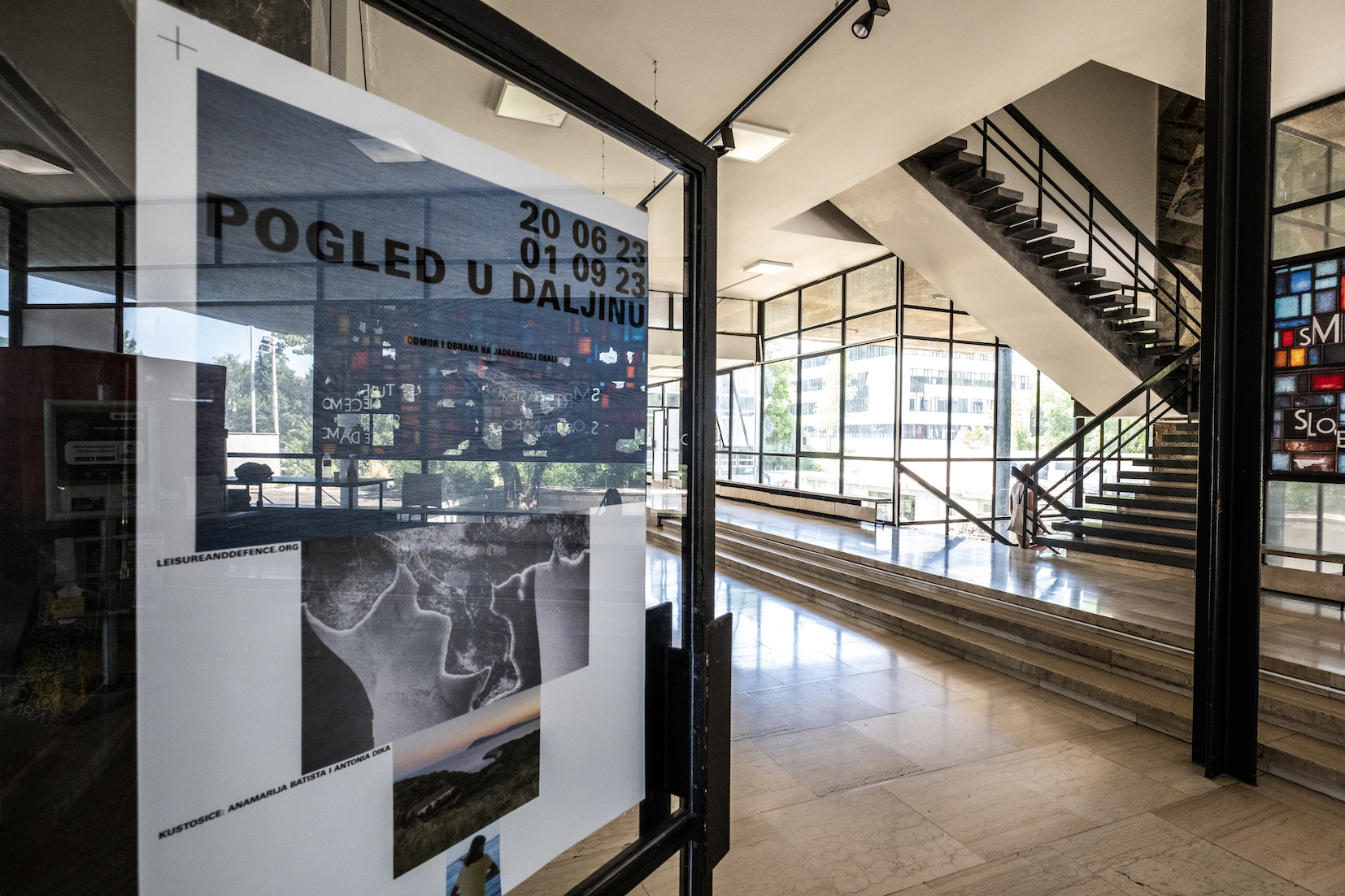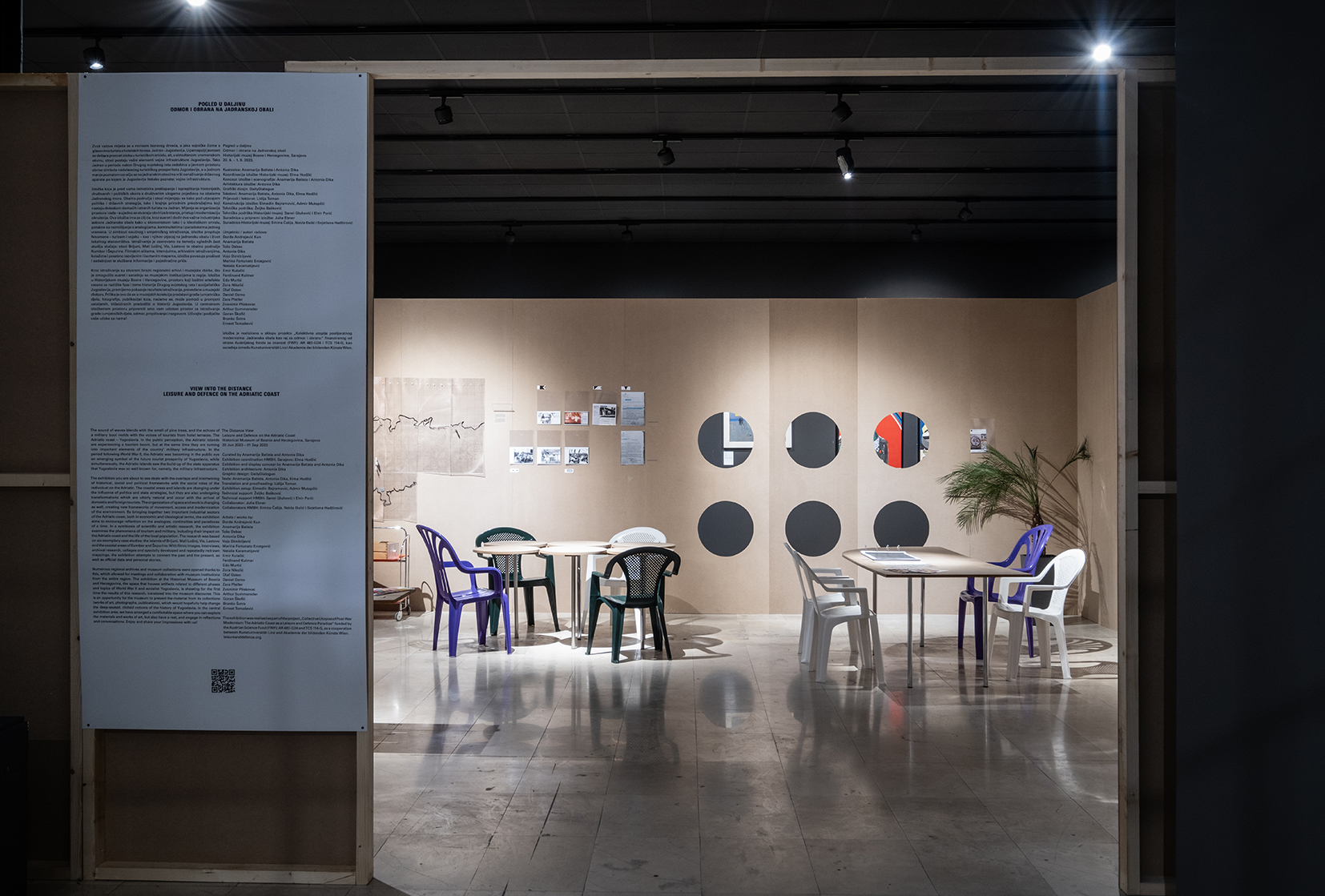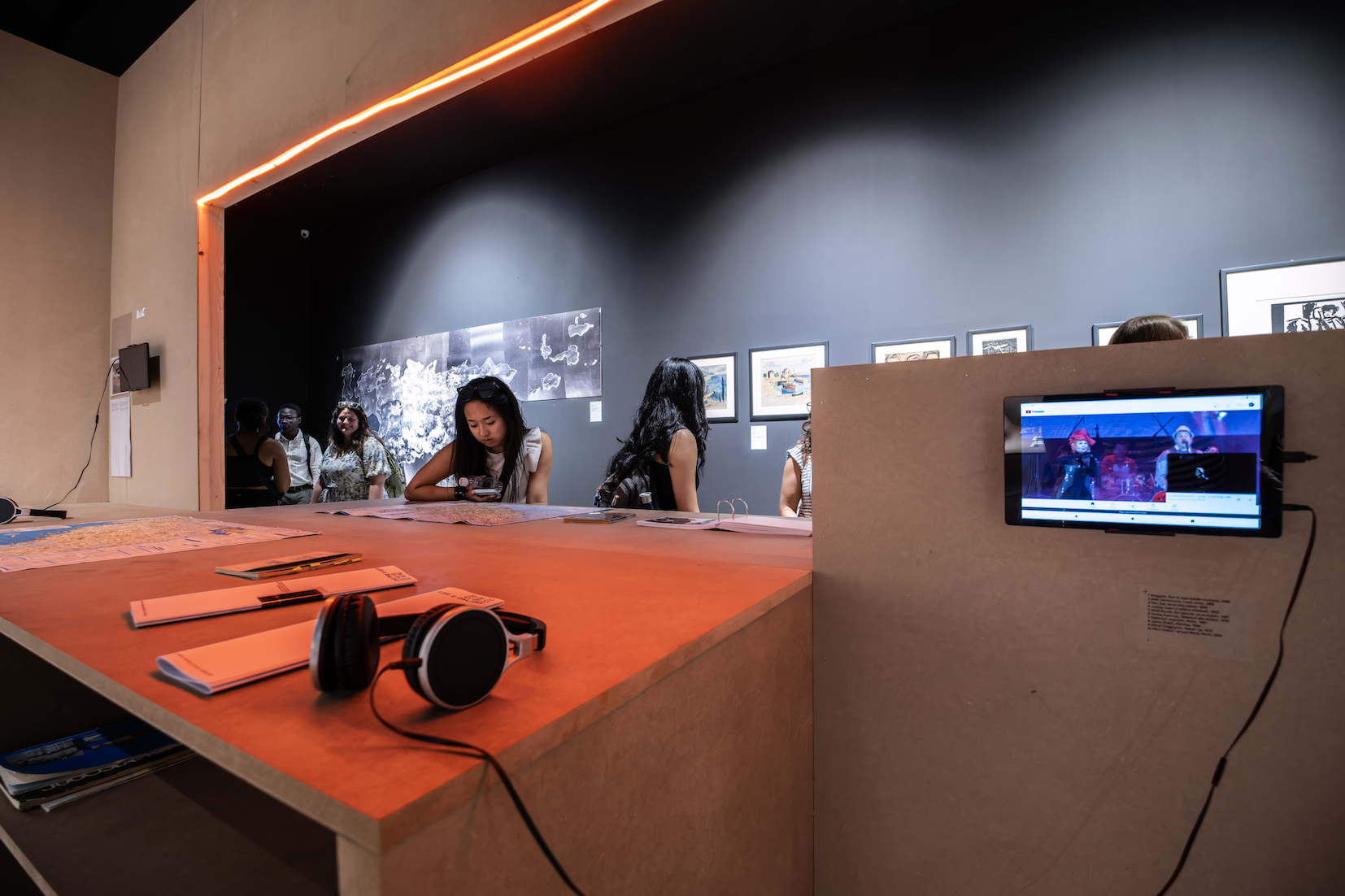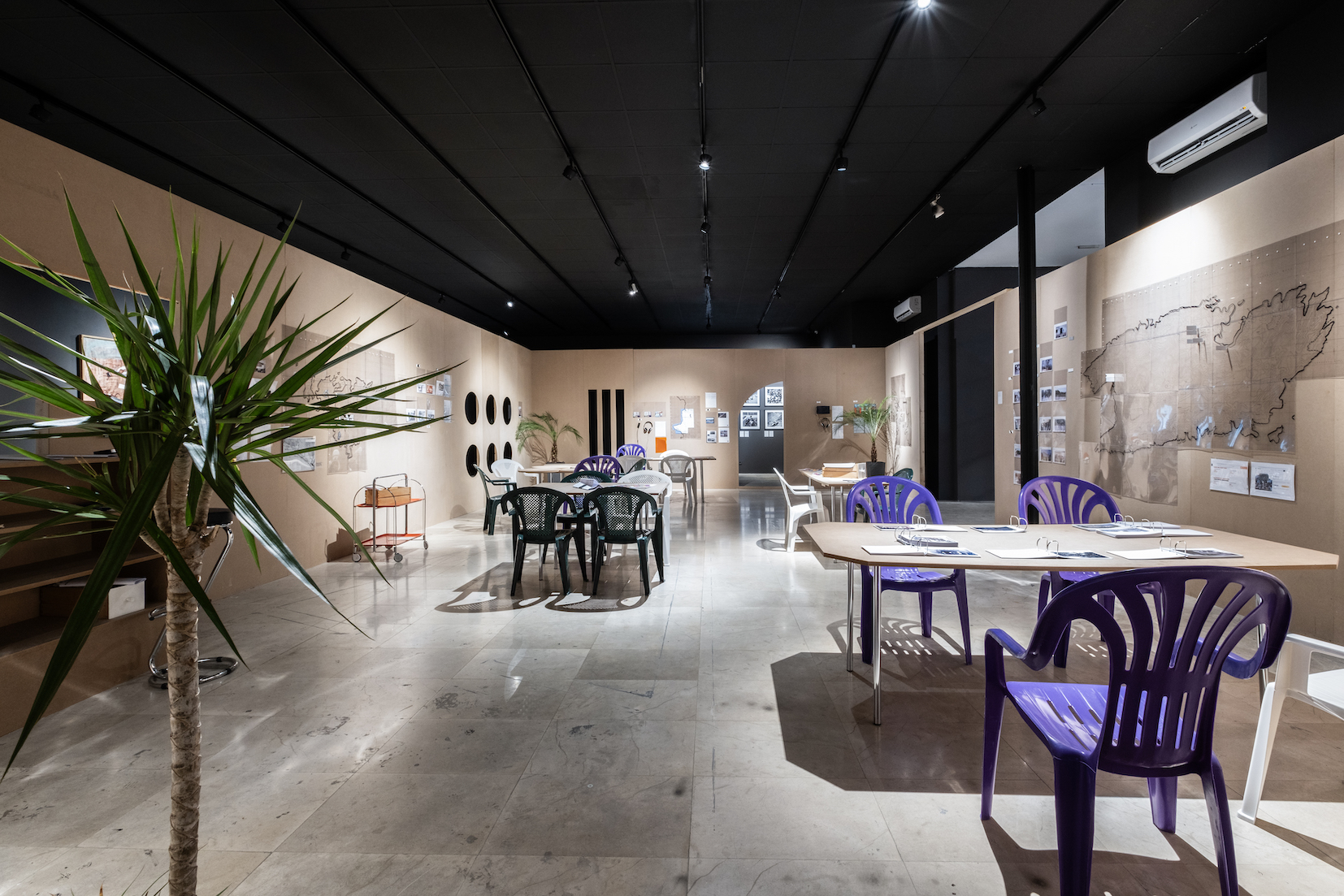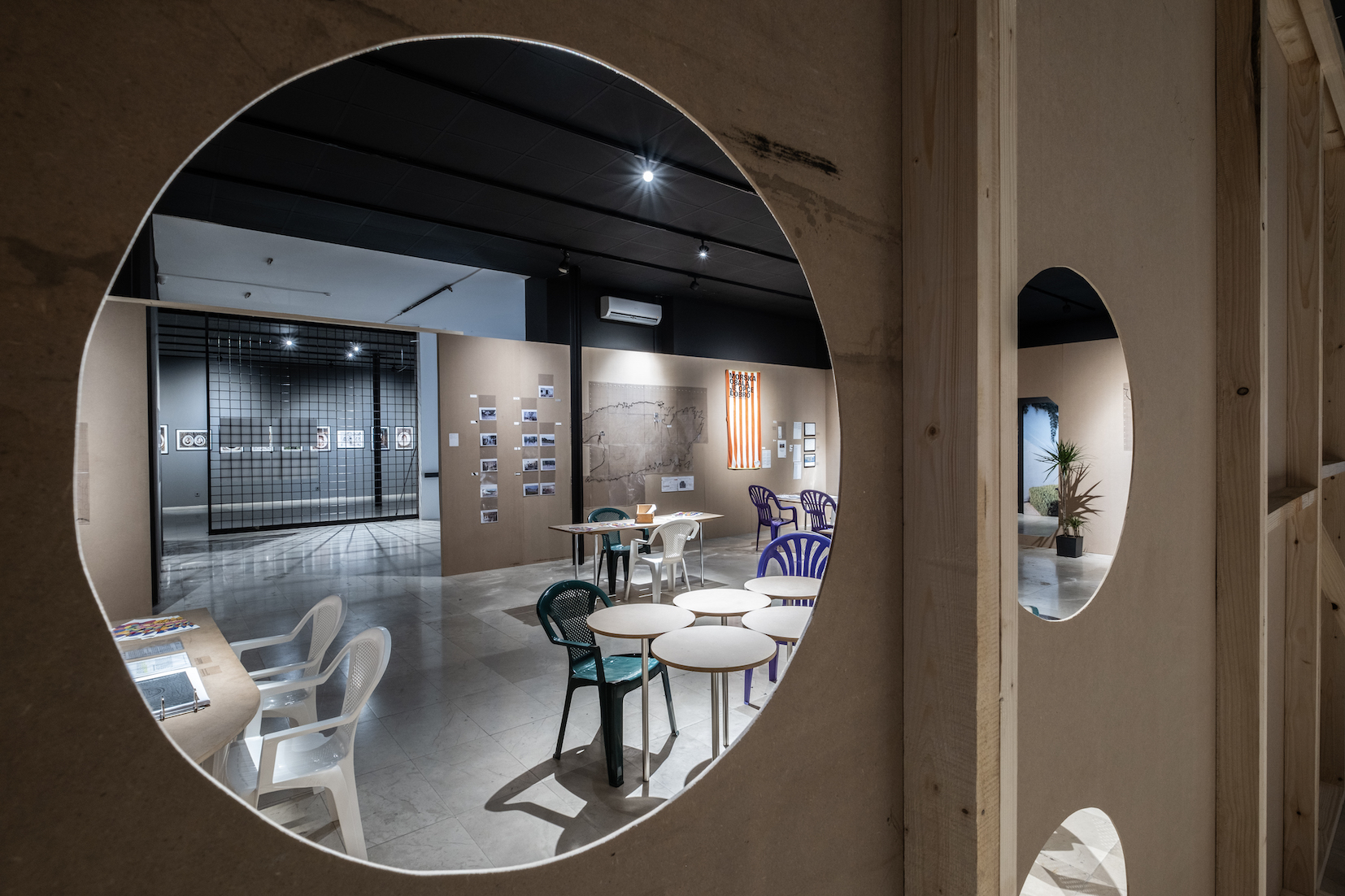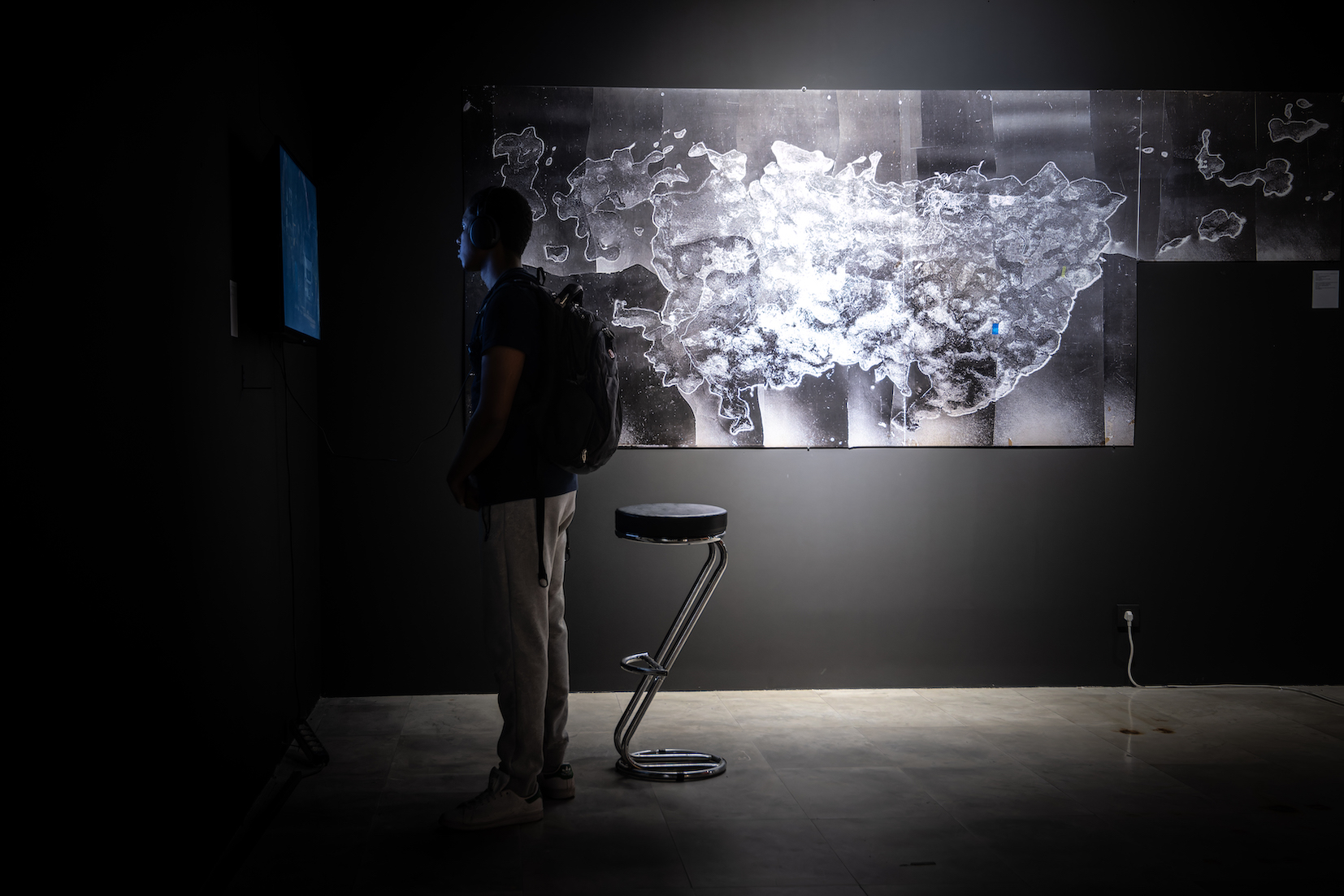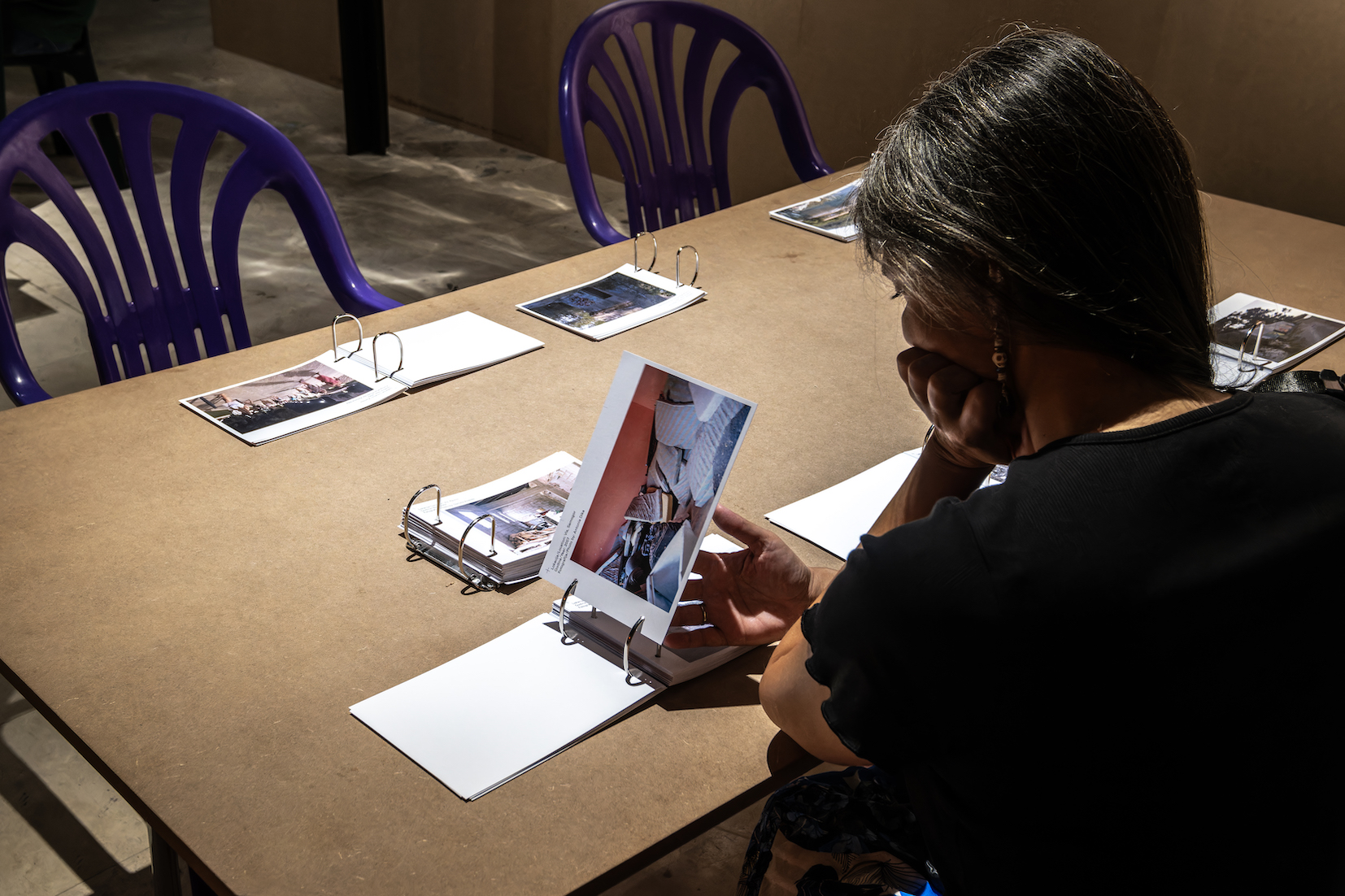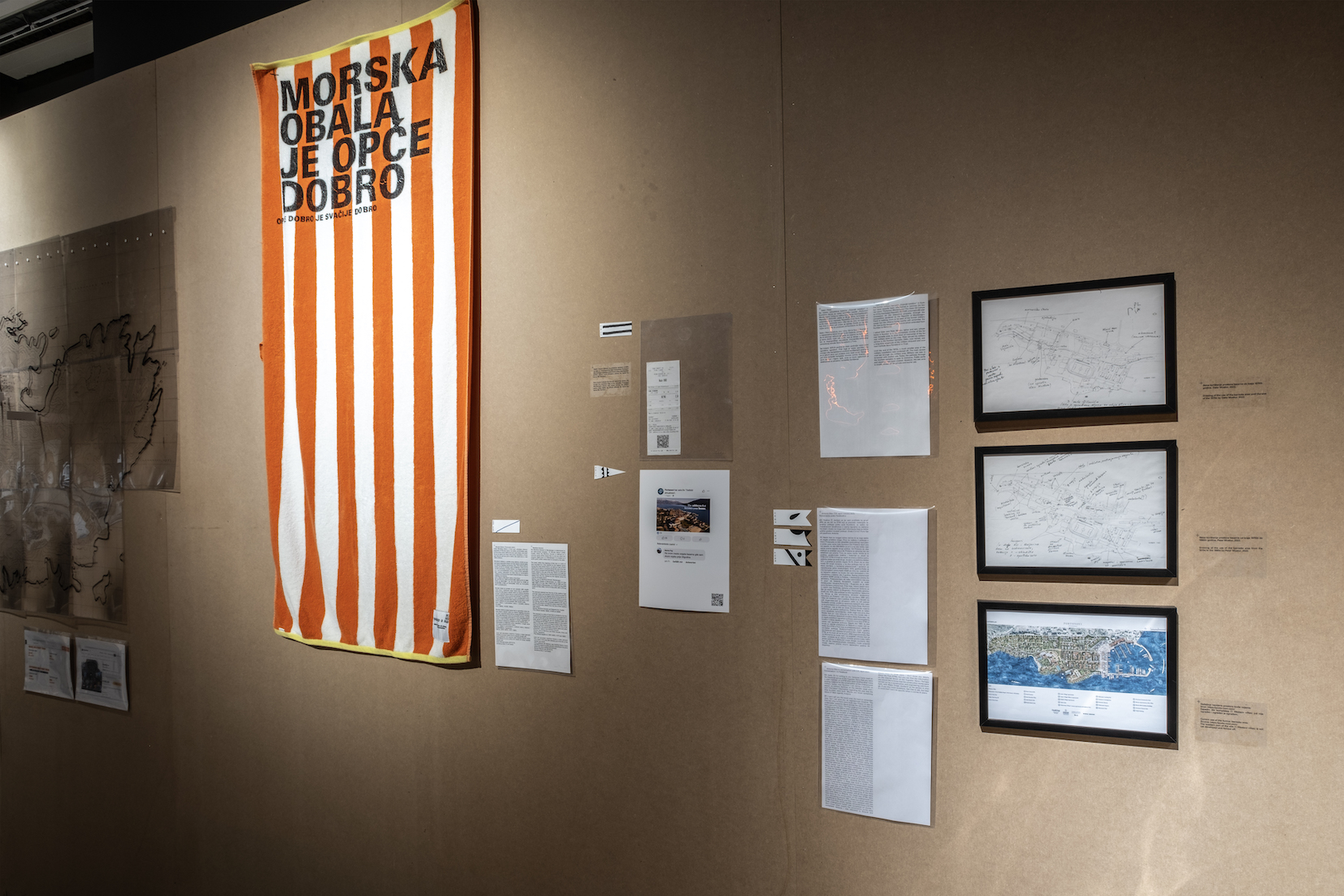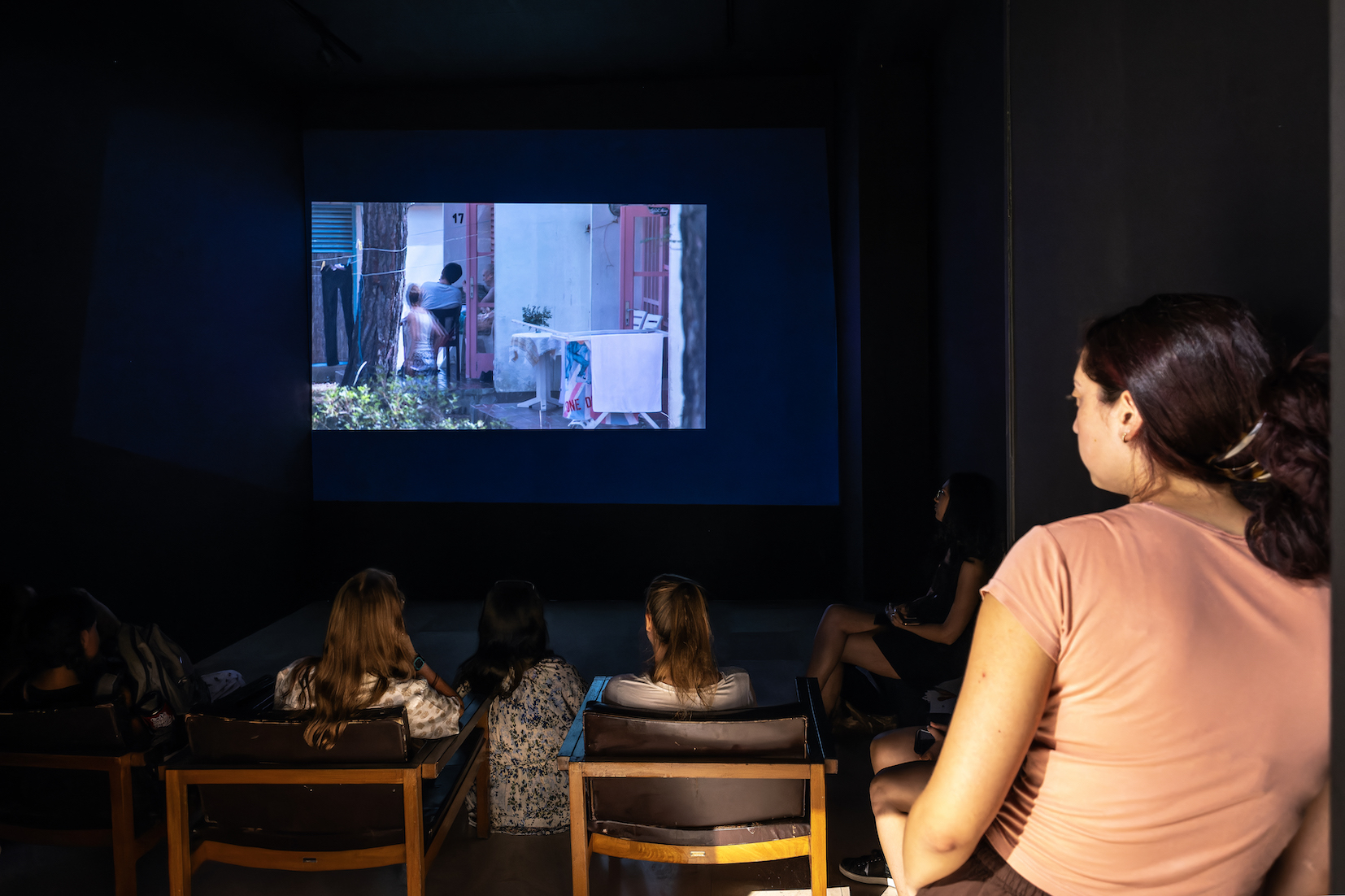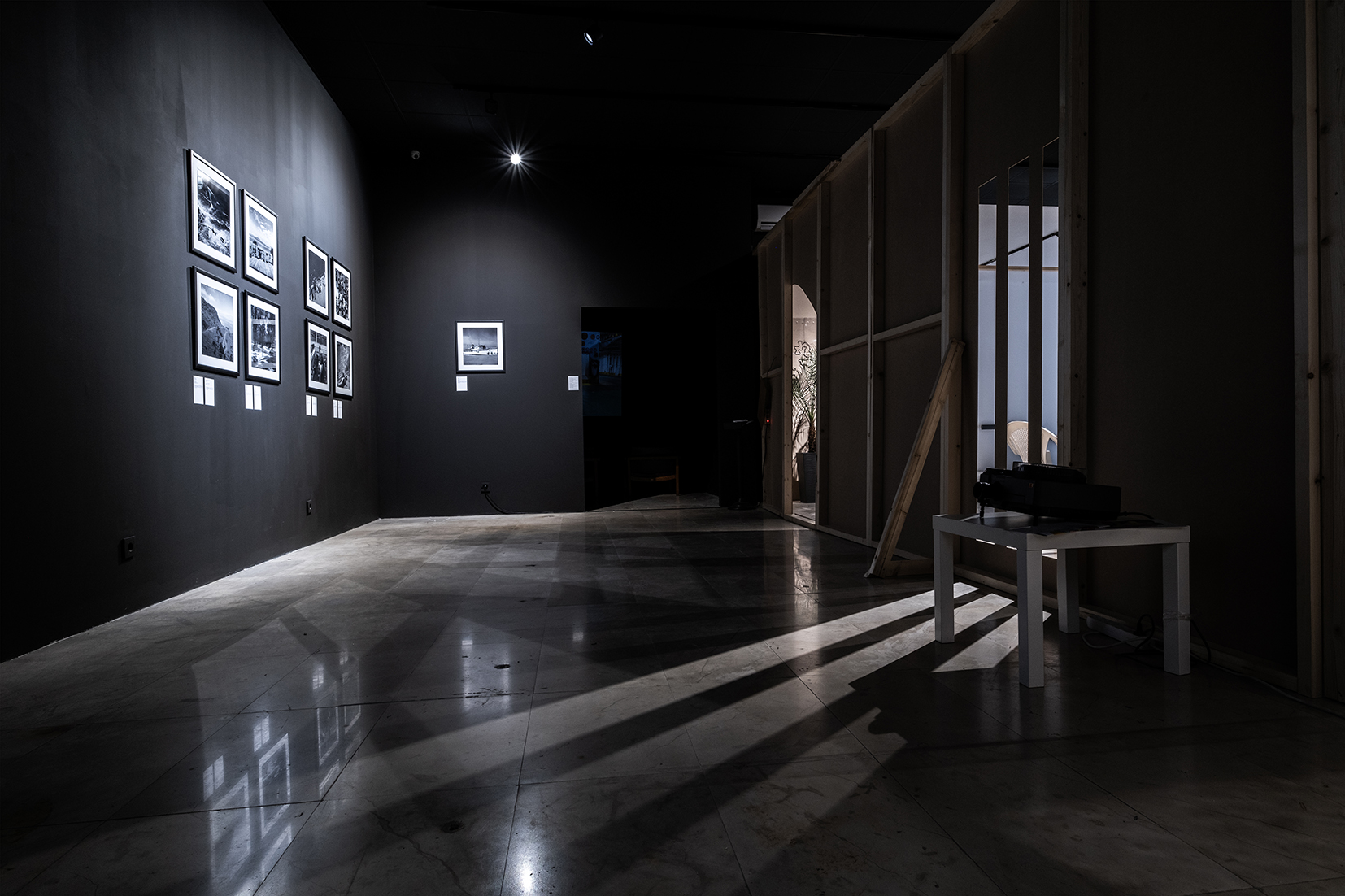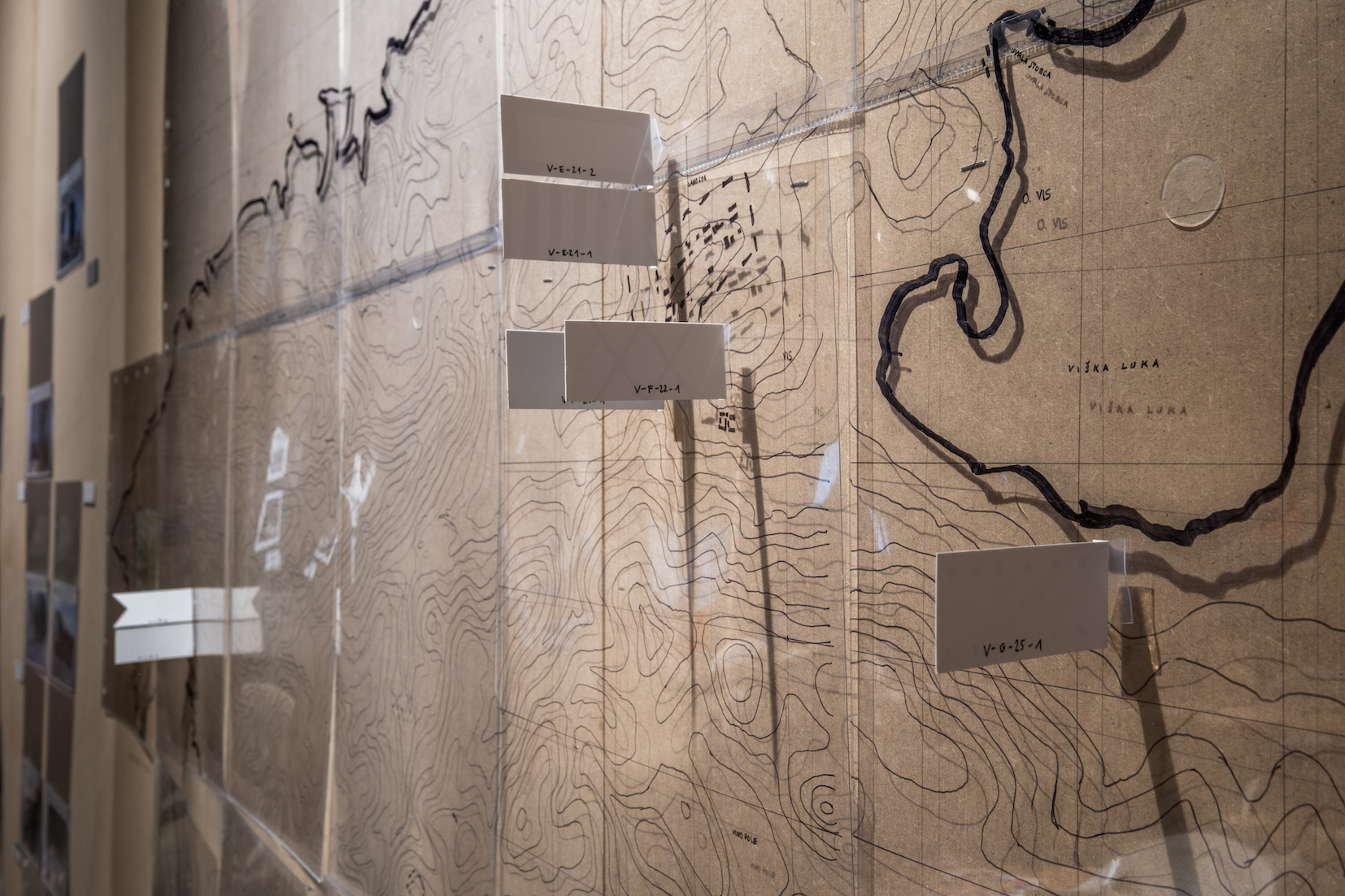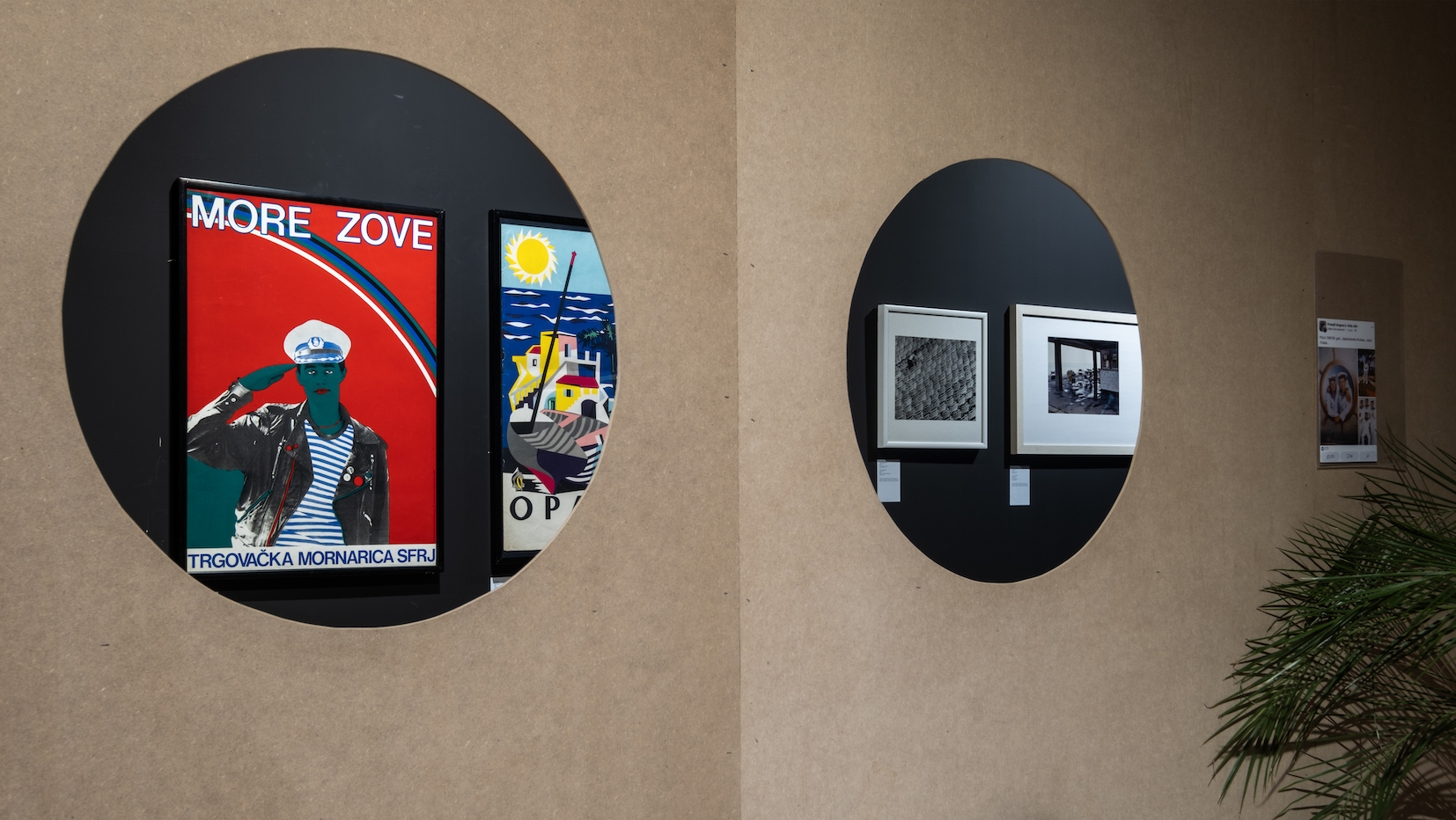Elma Hodžić in an interview with Anamarija Batista and Antonia Dika
EH How, when and why has the Adriatic become the subject of your research?
AD I think that my fascination with the Adriatic developed when I moved from Rijeka to Vienna at the age of 11 and longed desperately for the Adriatic Sea and everything that went with it – my grandmother, my friends, cousins, and the lights that flicker on the other side of the bay. This was probably a subconscious reason why I’ve chosen a topic related to the Adriatic for my graduation thesis at the Vienna Faculty of Architecture. That's when I first started exploring the military zones on the Adriatic islands. I was intrigued by the fact that on small islands, which have a very small population, there are military structures of an enormous size, most of which were abandoned at that time, i.e. in 2007. I actually planned to re-design a former military facility, to give it a new purpose, but when I scraped under the surface, I realized that these objects were basically undocumented and that hardly anyone knew anything about them. My conclusion was that before developing some cool idea for converting such a facility, it was important to learn more about it and look into its history. So, the endeavour turned from a practical work into theoretical research. The first islands I explored were Vis and Lastovo. The hardest part was to find all these military structures on the islands, to obtain information about them, like where exactly they all are, when they were built, what they were used for... Already at that time, conversations with the local population were of great importance in gathering the information. After graduation, I did many other things, but I was still occupied with this topic, and every now and then I did some research along the way, visited the locations with photographer Daniele Ansidei and took my students on study trips along the coast. The result of that was the book titled "Mapping the Croatian Coast. A Road Trip to Architectural Legacies of Cold War and Tourism Boom", published by Jovis. In 2017, my collaboration with Anamarija began. Our project "Collective Utopias of Post-War Modernism" was supported by the Austrian Science Fund (FWF) and this is where the story begins. The exhibition presents the results of our many years of research as part of the above-mentioned project.
AB My story on the Adriatic starts with my first steps as child. At the end of each school year, I would leave Zenica and go with my parents to the sea. I would spend the months of summer in Dalmatia, first with my parents, and then with my aunt and cousins. That was a lot of time spent on the sea, so at the end of August I was looking forward to the smells of the industrial giant again. At the sea, I would hang out with the so-called weekenders, the locals and tourists, who started coming to the Adriatic in greater numbers in the 80s. The sea, the smells, the encounters, the relaxation and the way of having leisure got under my skin. In a way, the Adriatic was part of my growing up, together with the flows of its urbanization, its openness, and together with all its layers. As a child and a young person, I was meeting people from all over Europe, and this is what shaped my openness and curiosity towards people and faraway places. For me, swimming and looking into the distance represent a special form of contemplation of natural environment, a moment of reflection. Floating in space and moving towards the distance. Over time, I visited other Adriatic islands as well, including the ones we are exploring in our scientific-artistic project. I find great pleasure in immersing myself in archival stories, in talking to the locals and intertwining of these experiences with my own experience of the Adriatic coast. My father spent two years on Vis, back in the 1950s, serving the army. I am particularly interested in the concept of vacation and tourism in Yugoslavia, the concept of leisure and get-togethers. In that period, tourists would often return to the same places. A connection was created between different worlds, worlds that met right there, at the Adriatic horizons. My exploration of spatial development strategies is based on the links between economic policies and development strategies. Yet, I am also interested in atmospheres, in people’s relationship towards nature, as well as in issues of aesthetics and conceptions of space.
EH Is there any form of "tradition" in the exploration of this topic that you could rely on or build on? Is there any literature that deals with the complexity and paradoxes of the development of the Adriatic islands as the places of tourist and military utopia?
AD The tradition is that there is no tradition. The period of Yugoslavia had been generally neglected for a very long time, but over the last few years it has become the topic of many scientific and artistic works. All new epochs largely ignored the previous ones, and this was especially the case in the 1990s, when new states were formed. The spatial plans of previous generations were thrown away. Everything was done all over again.
As for this paradoxical development of the military and tourism in the Adriatic, we do not know if someone has dealt with this before, but there are several interesting works from different fields, works that explore the topic of the coast and architectural structures from that period and, what is currently quite prevalent, works focusing on the topic of privatization of the coast. In the course of our research, we have come across many local initiatives, which we appreciate. We love the works of Motel Trogir, Pulska Grupa, Michael Zinganel, Vladimir Kulić and Maroje Mrduljaš, Ana Dana Beroš, Igor Duda, Karin Taylor, Tanja Petrović, Melita Čavlović, Damir Gamulin and Antun Sevšek. I probably forgot to mention some important names here. And, speaking of literature, I have to mention Paul Virilio’s classic, Bunker Archeology, which was a great inspiration to me in the beginning.
AB The tradition of scientific & artistic studies on the military and its coastal defence strategies exists primarily in countries such as Sweden, Spain, the United States, etc… Gender issues, as well as the issues of access and repurposing of military facilities are also often discussed there. In the Adriatic, however, these topics are currently 'retold' within the framework of tourism narratives. What is interesting about the Adriatic is that the abandoned military facilities still create moments of fiction, which is conveyed further, through architectural views and urban planning concepts, while the conversion of the tourist facilities takes place according to the postulates of today's consumerism, and has a primarily functional nature. Hidden in the natural environment, the military infrastructure enables perception of the old fiction of invisibility and readiness. This topic was also addressed in the field of art (e.g. Sandra Sterle, Milijana Babić, Slaven Tolj). As far as tourism is concerned, the topic has become quite important for several reasons: because of the modernist architecture and social approach of the time, but also as a result of the current issues concerning the maritime property, public spaces and access to hotel structures, e.g. by the local population.
EH What archives were you able to examine? Are there more unexplored islands, stories and collections in that area?
AD The archives and their examination are quite a specific story in our region. Especially in the context of the military. There must be a lot of interesting and unexplored stories here, but the access to the material is often poor or completely restricted. Much of the material from the period we are exploring has not been studied yet, but it is impossible to access it or have a look at it, at least for us, "ordinary" scientists. My odysseys in trying to get a permission to conduct research in the Military Archives in Belgrade is also a special story (see footnote number 15 in the text Military on the Coast in Times of Peace).
We have done research in the Croatian State Archives, the Archives of Yugoslavia, various local archives, and even in the aforementioned Military Archives. Concerning the military facilities, the archives of NATO and the CIA were a special discovery for me – their documents are publicly available on the Internet, which is not the case with “our” archive material. The examination of these archives is really interesting because they offer a direct insight into how the West viewed Yugoslavia at the time. Reading those documents is almost like watching The Americans.
AB There are, as Antonia says, many 'voids' in archival chronologies. A lot of material was destroyed during the disintegration of Yugoslavia. Considerable effort is being devoted to the examination of the archival materials, and there are many attempts to revive the people’s memories of that time, which is very good. These memories have become very fragmented and people need time and ‘pictures’ to go back to that period and deconstruct it through the memories.
EH Seaside and relaxation – how did the visits to the Adriatic turn into a ritual practice within the socialist framework?
AB Well, a decision was made that high productivity in work collectives also required time for rest. Igor Duda wrote about it in Turizam narodu. Godišnji odmor kao proizvod socijalističke modernizacije (2011) [Tourism to the People. Vacation as a Product Socialist Modernization]. The issue of tourism heritage is also addressed now. In the 19th century, holidays at the sea were enjoyed by the Austro-Hungarian citizens, among others. Paul Kuppelwieser was gathering the Austrian tourists on the Brijuni Islands, the high society members were spending their summers in Lošinj. As Kuppelwieser stated at the beginning of his journey to the Adriatic, he wanted to revitalize the south of the Austro-Hungarian Empire with his work and investments. After the beginning of the country’s socialist development, this ritual of seaside relaxation was taken over within the framework of labour movements as well. Leisure was seen a source of energy and good health. Leisure was part of work, because it reinvigorates work. And these holidays were paid from the income generated by the work collective itself. Leisure also meant distance from the collective and formation of new structures and new collectives. After expressing initial reluctance – people felt the need to stay at home and help their parents and families or they had other reasons for not going to the sea – the ritual of spending holidays at the seaside became an established practice of the population over the decades. There were workers’ resorts, hosting entire workers’ families. The gathering of adults and children from all over Yugoslavia and from other countries made the concept of vacation open in social terms. In winter, pensioners of Yugoslavia had the opportunity to spend a certain period at sea. This would prolong the tourist season, and at the same time it would help protect the pensioner’s health and make their life easier.
The seaside time and relaxation were made possible thanks to infrastructure projects such as the Adriatic Highway, Jadrolinija and hotels. Also, many people choose to build their own houses at the sea.
EH What makes the Adriatic so specific in terms of the military infrastructure development? How come the islands were chosen as the place for building the military facilities – is there any obvious historiographical or geographical logic behind such strategies?
AD The islands were Yugoslavia's first line of defence against a potential attack from the sea, the first site where fixed military installations could be built. In fact, as a former military officer from Lastovo told us, the naval army ships were supposed to take over the first line of defence in case of an attack, but in times of peace, and in terms of fortified facilities, the islands were the first defence line. Of course, the tradition of military fortifications had existed on these islands before. People say that Vis, owing to its position in the middle of the Adriatic Sea, played the most important role in the military context of the Adriatic in all previous empires and kingdoms. "Whoever has Vis, they have the whole Adriatic”, they say. When mapping all the locations of defence infrastructures, one can easily understand the geographical logic and defence strategy. Of course, the defence strategy would change over time, depending on who had to defend against whom. By mapping the military installations on the coast, we can also see that the JNA (until 1991) was exclusively a defensive army, which can confirm the often-stressed official narrative in the context of Yugoslavia as a member of the Non-Aligned Movement.
EH What did the process of designing the exhibition look like?
AB The idea for the exhibition display, which we developed together as part of our research, thematises the idea of 'watching the border'. The inward-facing terrace incorporated in this exhibition symbolizes a place of relaxation and time off, but also a place for interaction that doesn't need to have a particular purpose. These moments, and also places intended for it, were also the places of the political. On this terrace we have formed our own archive of photos and texts. These serve as windows into the world of the 20th century, a world that conceived the collective and labour based on different rules and ideas. Work in the collective, work with the machine and care work were valorised by the possibility of having a time off. Even if one develops and engages in an exchange within the framework of work, its normativity is still clearly delineated in the social order: the disciplining of bodies in the sense of fulfilling ideas of productivity. The cut-out areas allow a view to the outside, to the areas outside one's own zone. They point to something that can be entered, or they suggest that something is out there that can be explored and addressed. However, this is outside one's own zone. It takes an effort to approach it, to look at it, and to develop an idea of it. What it was, how it was and what it means?
AD Our research is fluidly and almost seamlessly translated into the concept of the exhibition. The display format is a very suitable method of presenting such a complex and sometimes controversial topic.
EH What is the utopian framework for the future of this setting – what are the plans for the future of your research and the transformation of the exhibition into other forms of storytelling?
AD We hope that, by presenting the results of our research, we would shed more light on this period and area. We also hope we would stimulate discussions and that the exhibition would serve as a platform for generating new insights. In the future, we would like to devote more efforts to involve the citizens themselves, as witnesses of a time. We plan to do some workshops in this context. We are working out new methods. We also hope that the exhibition would be shown at other locations, too.
AB As Antonia has said, we intend to develop methodological approaches and work on the publication of our findings. We would like to show the exhibition in other cities, too. To continue the dialogue we have started in Sarajevo. We are interested in immersing ourselves in the next layer of shared experiences of leisure and defence. On the one hand, we are working on the deepening and gathering of memories of military infrastructure, but on the other hand, we are also interested in hearing the impressions of local and international tourists about the Adriatic in the period of Yugoslavia.
